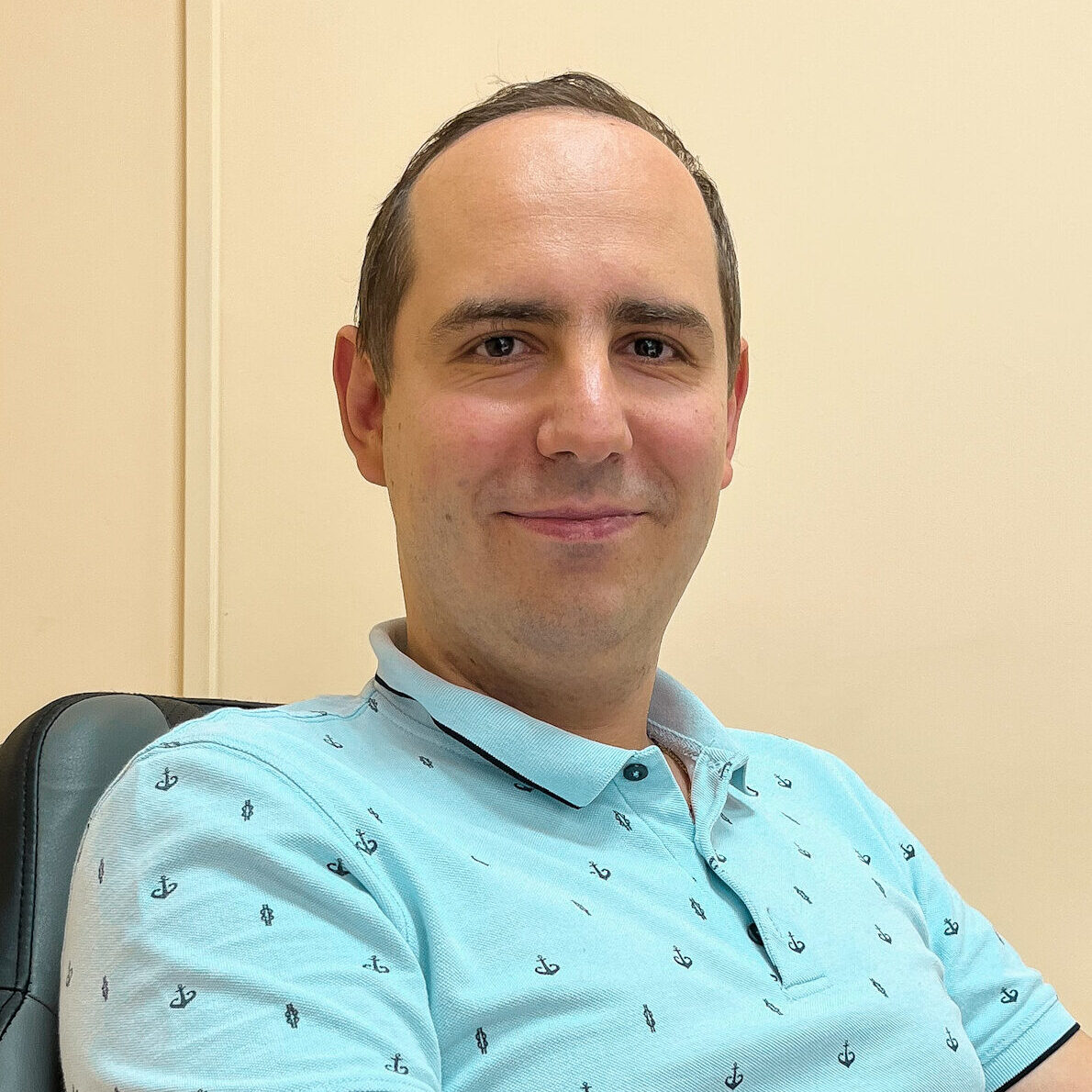Custom Medical Practice Management Software Guide: Top 7+ Features, Solutions, Use Cases

In this article, we’ll consider everything there is to know about custom medical practice management software development: requirements, processes, functionality, and technical nuances specific to this healthcare IT product type. Medical practice software functionality covers every business operation, from patient appointment scheduling and organization of health services to collecting patient payments. Implementing solutions from an EHR software development company can enhance these functionalities.
| ⚠️ If you require immediate help building a practice-management system in healthcare, please contact our IT experts for deeper project consultation! |
What Is Medical Practice Management (MPM) Software?
Modern medical offices work as small data-management factories, aspiring to orchestrate a wide range of administrative and clinical workflows under pressing conditions: the ongoing healthcare staff shortage and an aging population. These activities traditionally involve a lot of mundane administrative work specific to front-office and back-office departments:
- Keeping track of patient visits and status
- Managing appointment calendars
- Updating medical records and prescriptions
- Collecting patient feedback…and many more tasks.
According to research conducted in 2018 (good old pre-Covid times!), about 40% of healthcare practices registered in the United States had fewer than 5 physicians onboard. Almost 18% of American healthcare providers were solo healthcare practitioners, and 23% of medical offices featured only 2 to 5 physicians (we assume these numbers could still be valid for 2025.)
At the same time, the total number of patient primary care visits is close to 1 billion every year. In other words, smaller medical practices with smaller admin staff are experiencing higher levels of tension as they attempt to rebalance their resources between administrative routines and core medical activities.

According to healthcare industry reports, a consequence of this alarming situation is that physicians must spend nearly 4.5 hours per day working with electronic health records, which reduces the amount and quality of the health services they are able to provide. Despite the fact that a considerable administrative burden is put on healthcare professionals, U.S. doctors are expected to see 20 patients per day (this takes, on average, 51 hours per week).
With that said, the primary goal of medical practice management software development is the automation and facilitation of administrative and non-clinical tasks so more time and resources can be reserved for core value-added healthcare services. Medical organizations of any size can optimize their efforts by using MPM software instead of paying painful administrative overhead resulting from continuous inefficiency.
Take a minute to learn more about our custom healthcare software development solutions before you proceed to the next section, where we will explain how medical practices can improve the situation with MPM software:
| ✅ How to build the best custom medical practice management software? We are sure that the best product can be created only through a truly individualized approach guaranteed by custom software development. Our services encompass API engineering and integration with PowerApps and generative AI solutions used in practice management software development for small clinics, travel nurse agencies, and private medical centers. TATEEDA GLOBAL has deep expertise in designing and creating cloud-based healthcare software solutions and products for American and foreign companies. This includes custom biotechnology lab solutions, custom pharmaceutical inventory management systems, and custom patient portals for health-tech businesses. If you are interested in developing medical office management applications, please contact one of our experienced medical software engineers for a free consultation: |
Ready to Adopt Custom Medical Practice Management Software?
Our company with a team of 100+ senior software engineers can help you create cost-efficient customized healthcare practice management solutions.
Table of Contents
Why Clinics & Medical Offices Need These Key Medical Practice Software Features and Solutions
As mentioned previously, healthcare sector companies require efficient software systems to keep clinical and nonclinical tasks coordinated and synchronized to avoid excessive hours of administrative work.
Administrative activities normally stay behind the scenes, but if a medical practice fails to organize this domain, the entire healthcare facility operates insufficiently. This is why the adoption of a practice management system in healthcare is worth special attention and investment.
Streamlined Front-office Operations: Save Valuable Work Hours for Healthcare Staff ✨🧾
This realm includes all patient interaction traditionally assigned to medical office receptionists and front desk administrators. Sometimes, in medical practices that avoid hiring full-time admin staff, these tasks can be partially undertaken by nurses or even the physicians themselves. (Of course, this represents serious responsibility creep and total mismanagement.)
In the past, these activities involved hours and hours of phone calls, greeting visitors in person, answering patient inquiries, scheduling office appointments, calling patients to remind them of upcoming appointments, and more. Nowadays, these activities can be minimized and facilitated with the help of custom medical practice management software development services.
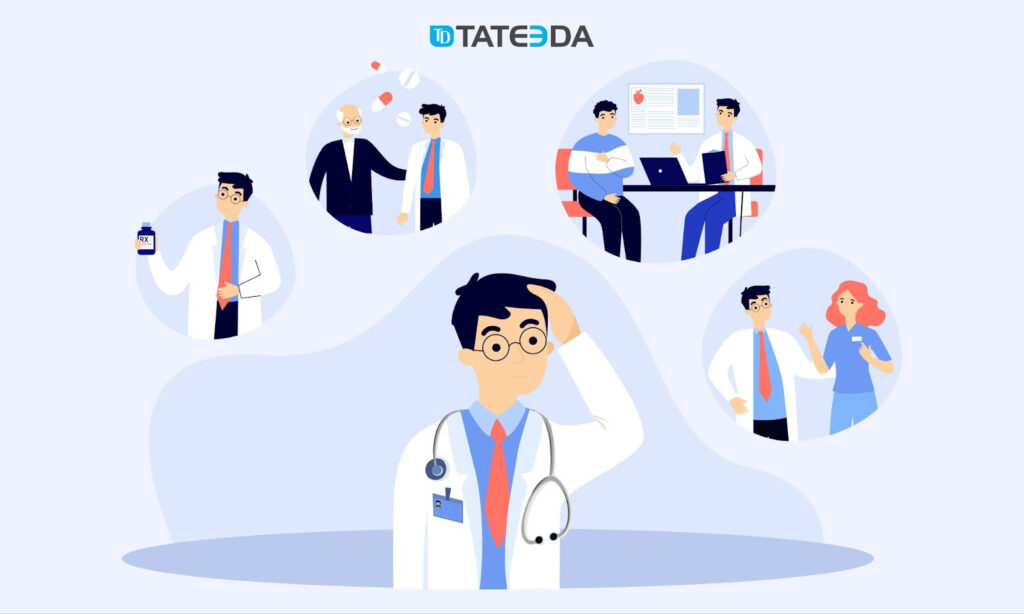
With the automation options involved in a PMP system, medical staff can now:
- Avoid manual entry of health data via EHR development and integration, which allows synchronization of information across numerous data systems and electronic forms.
- Send automated email and mobile reminders, thereby reducing time spent on patient calls.
- Offer chatbots via websites or mobile applications capable of guiding patients and answering frequent requests.
For this, the MPM system usually involves some type of patient portal solution that functions perfectly to let patients:
- Review physicians’ appointment schedules and check for availability of free time slots.
- Use interactive calendars to select a convenient time to schedule an appointment with their medical specialist.
- Check for e-prescriptions, medication plans, and lab test results online without the need for human receptionists.
- Make use of educational self-service tools in a variety of ways. Patients can learn more about clinics and medical services without asking a receptionist for help.
- Manage and verify profile details, including insurance policies and more.
- Access and manage up-to-date electronic health records.
| A patient portal is one of the most important medical practice software features, as it allows healthcare facilities to alleviate administrative burdens put on medical and administrative staff by encouraging patient self-service. You can view an example of a patient portal app below. It includes a wide spectrum of customized healthcare practice management solutions: EHR access, diagnosis, lab test results, downloadable medical documents, e-prescriptions, medication plans, and more. |

Facilitated Back-office Operations: MPM as a Lighter Alternative to ERP Packages for Smaller Medical Practices 🕒💼
Back-office healthcare provider operations include bookkeeping, medical billing, insurance verification, inventory management, HR operations, financial analysis, and operational reporting. Additionally, this can encompass the integration with on-demand medical staffing platforms, which assist in fulfilling healthcare assignments and tasks through the utilization of short-term contracts.
While larger medical practices like public health centers or hospitals require enterprise-level healthcare ERP software that offers more powerful functionality, smaller private clinics or boutique medical practitioners most often require lighter solutions like custom practice-management systems.
With customized healthcare practice management solutions, medical practices can achieve the following results:
- Reduced administrative overhead in healthcare facilities. Since PMP software helps automate administrative tasks, working hours and the attention required to complete them can be redirected in favor of value-added activities and improving patient experience with practice management software.
- Improved medical billing and invoicing processes. More payment options, plus better processing automation and reduced risk of human error, ensure that payments are done quickly and efficiently. The results are improved cash flow and elevated overall financial stats/numbers.
- Integration between front-office and back-office applications & modules. A powerful combination of website + patient portal/patient mobile application with other systems (like medical appointment-scheduling system, healthcare staff-management portal, financial accounting, and medical payroll management tools) allows you to achieve unprecedented automation and synergy across departments, thanks to scalable solutions for medical practice management.

| ✅ How to build a custom medical practice management system? This is a question TATEEDA GLOBAL team members answer frequently… Medical practice software requirements vary according to healthcare practice size, operational practices, and technological level. This type of project includes back- and front-end development efforts, including web, mobile, and healthcare cloud technologies like the PowerApps integrations and generative AI solutions for healthcare practices (AI chatbots and more.) We can help you with the entire spectrum of these customized healthcare practice management solutions. Contact TATEEDA today! Learn more about our custom services for practice management software development for small clinics and medical centers: |
Looking for a Customized Healthcare Practice Management Solution?
Our company operates in the US since 2013 and is fully capable of developing medical office management applications for you!
The Best Software Components to Consider for Medical Practice Management Software
Before getting down to custom medical practice management software development, we need to identify all existing or potential software products that can be included in this system. This scalable solution for medical practice management functions as a data-management hub and can be assembled by interconnecting several independent modules, including both readymade products and custom applications. Let’s check out a few examples:
Electronic Health Record (EHR) System Integration 🗂️📊
Integration with an EHR system will empower your medical practice-management solution to parse and aggregate details from electronic records and display them via patient and physical access portals. Connection to EHR allows healthcare providers to keep track of patient information like medical history, diagnoses, treatments, and prescriptions while synchronizing data across all system modules.
Almost all medical practices in the United States use some type of EHR software, so a variety of methods can be applied to sync systems, including real-time medical data interoperability and HL7-based health data exchange methodologies.
Telemedicine Software & Medical Device Integrations 🌐🔌
Telehealth solutions allow healthcare providers to provide their patients with virtual consultations via video conferencing, messaging, and file-sharing options. In addition to these capabilities, it’s possible to deploy remote patient-monitoring IoT technologies to supervise patient health at home without putting them in inpatient mode.
Practice management systems in healthcare can work as a central data point to aggregate and represent biosignal information captured with miniature medical devices like blood pressure monitors, glucose meters, and ECG sensors. Measurable physiological information can be recorded in EHR and other patient-management systems for analysis.
Custom Web-based and/or Mobile Health Portal for Patients 💬📱
A web-based or mobile healthcare gateway app allows patients to…
- Safely log into their highly individualized profiles
- Access their medical records
- Communicate with their healthcare providers
- Schedule medical appointments
- Provide feedback via electronic data-capture forms
- Report health conditions
- Request prescription refills.
A custom patient portal can include a number of additional custom medical practice software features such as integration with affiliated pharmaceutical stores, educational materials, chatbots, and other helpful tools that save valuable time for patients and healthcare facility representatives alike.
Below, you can view an example of a mobile patient portal designed to work as a self-service front desk or gateway for patients, facilitating many administrative tasks traditionally performed by healthcare receptionists:

Medical Billing Software Integration 💻💵
Medical billing applications are used to manage payment and claim processing in healthcare practices and can become an integral component of customized healthcare practice management solutions. This component of the overall medical practice-management system can generate invoices, process charges, and submit claims to insurance companies. There exists a variety of protocols regulating financial operations in healthcare providers according to state and local jurisdiction.
A medical billing software interface can be incorporated into patient portals, allowing patients to securely manage online payments, perform direct bank transfers, or use other financial tools to maintain their credit balances with medical service providers. This functionality is subject to the highest cyber security standards in healthcare.
If you require help with medical billing and claim-processing software development, do not hesitate to contact our IT engineers at TATEEDA GLOBAL to learn more about improving patient experience with practice management software.
Medical Practice Analytics & Reporting 📊🧠
One of the most important objectives of healthcare practice-management software development is to provide medical service providers with asset and resource-management insights. This involves the accumulation of meaningful operational data and mining this data for important conclusions and decision-making.
This module is set to help physicians and healthcare administrators track inventory and control key business metrics like patient outcomes, treatment efficacy, and revenue. Needless to say, this approach, which includes medical data visualizations, can also help identify areas for improvement and optimize practice performance. For this purpose, Artificial Intelligence components can be integrated into healthcare office software workflows to capture, organize, and analyze medical data.
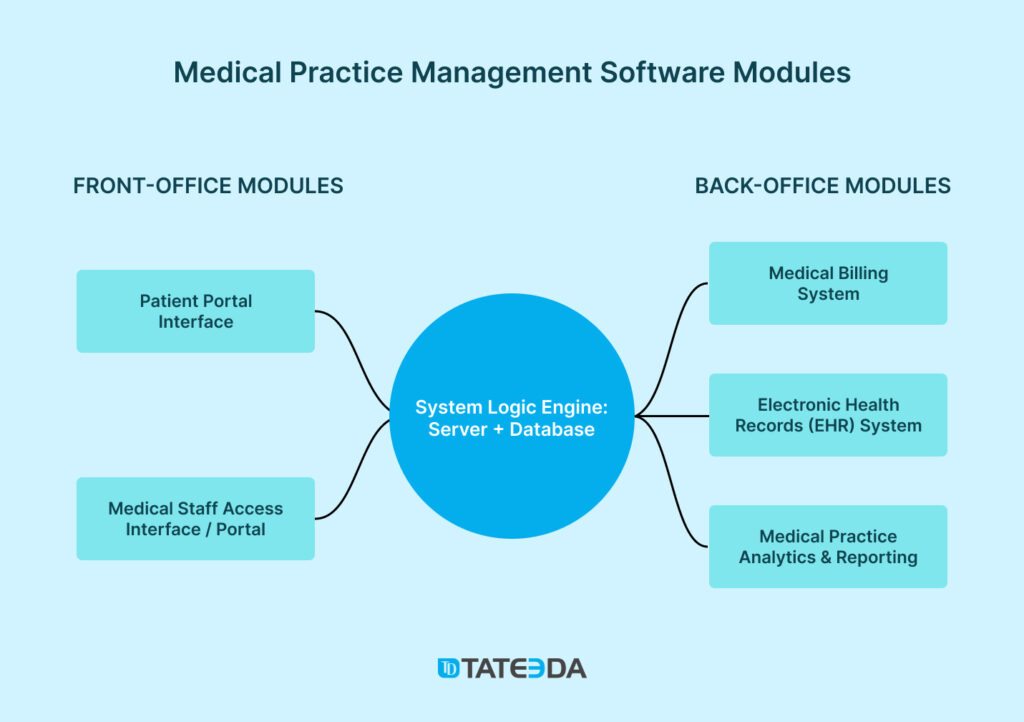
| ✅ Do you want custom medical practice management software development services for your healthcare facility? TATEEDA GLOBAL offers deep expertise in building healthcare IT products as well as outsourcing software development services for health technology providers, including the PowerApps integrations and generative AI solutions for healthcare. We can help you with the design and creation of custom, unique, AI-powered products for healthcare practice management. This approach allows us to take all your custom medical practice software requirements into account and craft the most efficient toolkit that perfectly suits your exact business model and processes. If you’re interested, please check our project health-tech portfolio: |
Delivered Healthcare Software Portfolio
The leading American healthcare companies benefit from working with us.
Important Points to Consider When Choosing a Practice Management System Options
Whether you opt for a ready-made medical practice software package with customization options or an entirely custom project, there is a set of parameters to be respected and considered. Before you and your IT partners get down to business with how to build a medical practice management system, it’s necessary to find resolutions to the following questions:
Hosting options: Cloud, Onsite, or Hybrid? ☁️
Will your custom medical practice software database and server be hosted online or offline (or probably a mix of both)? This solution depends on your existing hardware and software configuration and infrastructure. Roughly speaking, cloud-based hosting of software (online option) can be a more cost-efficient and easier method.
Deploying your system on local server hardware is often more secure, yet it can be expensive. There are other factors to consider, like the size of your database, the medical IT systems involved, and more, but the exact choice must be made by a skilled software engineer. A specialist will take stock of your specific situation and suggest the appropriate architecture. Sometimes, this can include upgrading legacy systems and/or moving your medical software products to the cloud.
Ease of Use and Staff Training 🎯👩🏫
Since healthcare practice management software development often includes building a data-processing engine (the central mechanism of the solution) and a custom user interface, it’s necessary to design the UI in the most efficient way possible. The user interface for medical practice software involves multiple dashboards, electronic forms with a variety of fields, role-based layouts, and report generators.
If you select a ready-made product, consider how simple, comprehensive, and flexible the software interfaces are. Make sure your UI/UX designers do their job in coordination with medical practice employees and administrators. Primary users are the best source for UI design requirements, guidelines, suggestions, and ideas.
Configuration and Scalability 🔧📊
Sometimes, software packages for medical practice administration can be very large, with excessive modules and a large set of medical practice software features. This increases costs despite the fact that many functionalities are underused. With custom software development, it’s easier to manage specific software configurations, avoid superfluous functionality, and add room for potential scaling. This means the ability to add more database space, users, and functions in the future without upfront overpayment for a ready-made package or tricky bulk offer.
HIPAA Compliance 👨⚖️📁
How important is HIPAA for healthcare practice-management applications? This requirement is of the utmost importance! If you want to acquire an off-the-shelf product or custom software, make sure it fully complies with the medical practice software requirements introduced by HIPAA. This includes specific spectrum regulations for patient privacy and data-access guarantees along with strong protective measures for electronic communications. See the following HIPAA compliance checklist defining scalable solutions for medical practice management (not a complete version):
| Technical precautions | 🔹 Transaction encryption and authorization 🔹 Login control and activity monitoring 🔹 Automatic log-offs for devices |
| Physical precautions | 🔹 Device access control 🔹 Workstation management 🔹 Device protection and use monitoring |
| Administrative precautions | 🔹 Medical staff training 🔹 Signing of BAA (business associate agreement) 🔹 Document security measures 🔹 Risk-management policy |
| Privacy precautions | 🔹 Respond to patient requests 🔹 Permission management for accessing PHI 🔹 Data integrity maintenance. |
Do you need help building a healthcare facility’s administrative suite for your front and back offices?
| TATEEDA GLOBAL can help you with all the steps for healthcare practice management software development. We employ a full spectrum of healthcare IT specialists available for consulting and hire in the context of health-tech projects: UI/UX designers, software architects, HIPAA-compliant developers, testers, and more. Book a free consultation with one of our experienced IT engineers to discuss details and software options: |
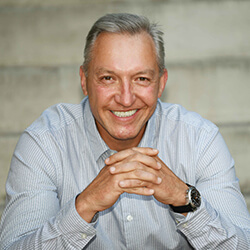
Slava Khristich
Healthtech CTO
Based in San Diego, Slava knows how to design an efficient software solution for healthcare, including IoT, Cloud, and embedded systems.
What Does It Take to Develop Custom Medical Practice Management Software?
Executing practice management software development for small clinics and other small practitioners doesn’t require large teams or expensive IT infrastructure with high medical practice management software costs. Instead, it demands agility and specific expertise in delivering cost-effective and nimble solutions. Thanks to modern, accessible cloud platforms, more companies can now leverage high-profile infrastructures at reasonable prices.
Step #1: Identify Your Medical Practice Software Requirements
- Identify all front- and back-office operations you want to digitize, automate, streamline, and synchronize.
- Audit and list the healthcare practice management solutions currently used in your medical practice.
- List software products that must be upgraded, replaced, or integrated with each other and/or new business modules as a part of customized healthcare practice management solutions.
- Identify the MPM application’s hosting model, including cloud-based and local software infrastructure options.
- Choose your technological platform for developing medical office management applications. Select custom solution development tools such as the languages and frameworks required to build your medical practice system. This includes web interfaces, desktop software, and custom mobile development scenarios.
Step #2: Shape Your Product Vision & Expectations
- Write several main scenarios of how your medical practice-management software will streamline and accelerate front- and back-office department operations.
- Identify expected measurable outcomes after the implementation of your healthcare practice management software. Make sure you have comprehensive KPI tracking and reporting processes in place.
- Ensure that you have created a comprehensive concept for a user-friendly interface. Your MPM software interface should be intuitive and easy to navigate, even for users with limited technological skills. A well-elaborated UI/UX concept will help minimize the learning curve and improve adoption rates for your medical practice staff.
- Observe technical prerequisites for seamless integration between systems. MPM software should be able to integrate with other systems and modules within your practice smoothly and correctly. As mentioned above, these systems may include electronic health records (EHRs), patient portals, medical billing software, and more.
Step #3: Implement Your Custom Medical Practice Management Software Product
- Will you use a ready-made product or opt for customized healthcare practice management solutions with a set of very specific features and technologies like AI integrations?
- Define the IT infrastructure and team necessary to create and/or configure your medical practice management software. For example, will you need a seasoned full-stack developer or a backend engineer for cloud data migration and application deployment? Will you require a specialist for cloud service integrations, such as generative AI solutions or PowerApps?
- Gather and/or hire a team of project managers, software developers, IT system architects, healthcare software testers, and UI designers. The exact composition of your team must be discussed with your IT service vendors.
- Plan a project and assign tasks to qualified specialists. Make sure skilled health-tech professionals manage and control the development of your custom medical practice management software solutions according to plan.
- Testing and integration: Ensure that your new medical practice-management product is smoothly synchronized with other office applications through APIs and other interoperability protocols. This requires prolonged testing and continuous improvement. Medical data should be 100% bulletproof against hacking, mismanagement, and loss. Contact us for a free consultation on building customized healthcare practice management solutions!
TATEEDA GLOBAL’s Custom Medical Practice Management Software Use Cases
We have worked with numerous American and foreign companies to help them create custom medical practice management software solutions of the highest efficiency for their precise business models and visions. We developed systems for pharmaceutical businesses, biotech giants, and nurse service providers. Medical practices can be very different, and so are our projects. Here are just a few examples…
Use Case #1. Nursing Service Provider: Mobile/Web-based Practice Management Platform Development, Services & Partnership
One of our clients is Travel Nurse Healthcare (an NDA-approved pseudonym), a large provider of travel nurse services in the United States. TATEEDA’s solution empowered Travel Nurse Healthcare to double its number of signed contracts in less than 3 years.
This has happened because of a range of IT solutions they introduced to their business practices. TATEEDA GLOBAL helped with customized healthcare practice management solutions, development expertise, and services. Our company currently maintains the client’s foundational job-management system featuring a sophisticated toolkit…
- Automated financial reporting and time-management modules for back-office operations, including medical staff HR processes.
- Distinct mobile applications for different user groups in their healthcare practice: nurses, admins, and healthcare representatives.
- A protected web portal for nursing staff and medical representatives for clinical access and use under specific protocols.


Use Case #2. Pharmaceutical Businesses: Web-based Back-office Inventory Management System Architecture & Development Services
TATEEDA GLOBAL worked as a project reinforcement partner to help SCRx Pharmacy with back-end development, cloud integration, third-party APIs, quality assurance, and many other key business process optimizations, such as…
- Automation and acceleration of business processes: pharma product distribution, both within the facility and shipping to customers’ homes.
- Crucial improvements in their pharmacy claim-processing system, including automated PDF document import and scanning in bulk.
- Implementation of an algorithm-based optical text-recognition feature to decipher handwritten text and more.
- Administrative alerts and notifications on inventory levels for pharmacy staff and managers.

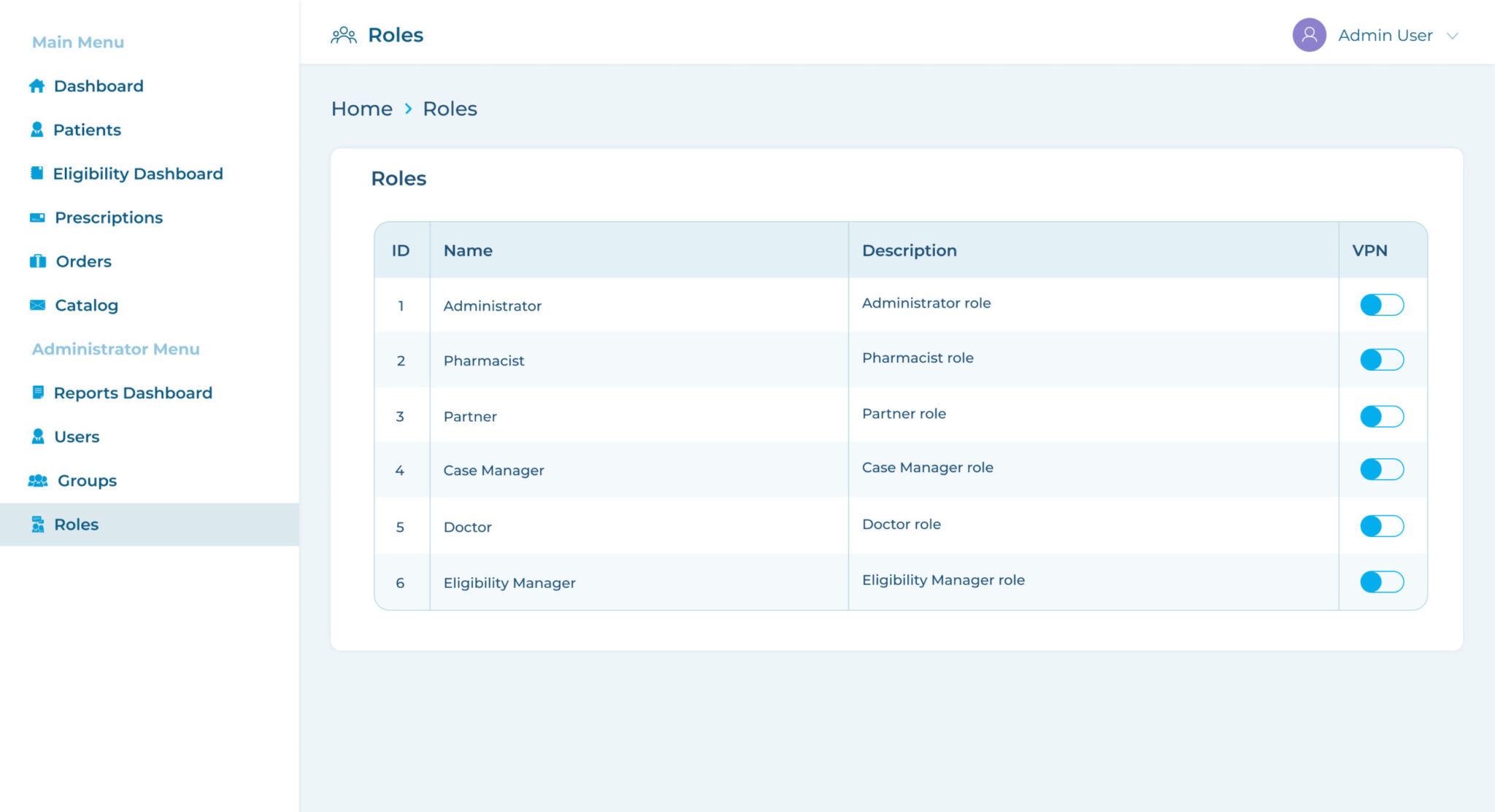
Develop Custom Medical Practice Management Software with Us
We are all set to provide you with full-cycle practice management software development services for small clinics or medical centers.
FAQ: Custom Medical Practice Management System Development & Services
What are the benefits of implementing customized healthcare practice management solutions?
As seen in the medical practice management software use cases presented above, this can be an extremely useful tool to accelerate business workflows and improve outcomes. Most importantly, medical employees can save a great deal of time and redirect it to more valuable/profitable activities rather than struggling with administrative routines!
What do you need to develop custom medical practice management software?
You need considerable skill and a degree in computer sciences, including software architecture, development, and QA. Additionally, it’s important to have sufficient expertise in medical software logic and business planning. If you require help creating a medical practice system for your organization or clients but lack the skills and experience, TATEEDA GLOBAL can help! Our team features strong capabilities in both computer science and expertise in practice management software development for small clinics or private medical centers.
What technologies do you use when developing medical office management applications?
When developing medical office management applications for our clients, TATEEDA relies on a robust tech stack that has proved itself very reliable and adaptable for software performance, scalability, and HIPAA compliance. Our team typically uses .NET for backend development, Flutter for building cross-platform mobile apps, and modern frontend frameworks like Angular and Vue.js for intuitive user interfaces.
For data storage and management, we work with SQL databases, and we deploy customized healthcare practice management solutions using AWS or Azure cloud platforms, depending on your infrastructure preferences. These cloud ecosystems not only offer scalable custom solutions for medical practice management but also support our integration of AI features and PowerApps offered by Microsoft, which makes your custom medical office management application smarter and more efficient right out of the box.
What is the cost of building a healthcare practice-management software on demand?
The medical practice management software cost depends on many factors: the size of the software solution, the number of custom medical practice software features, the number of modules to be interconnected, the composition of the team, and more. Building a custom software solution can be more expensive than subscriptions to ready-made packages; however, higher customization potential allows for greater benefits and convenience. All in all, medical practice management software cost can range from $50,000 to unlimited―please contact us for a precise estimate!
